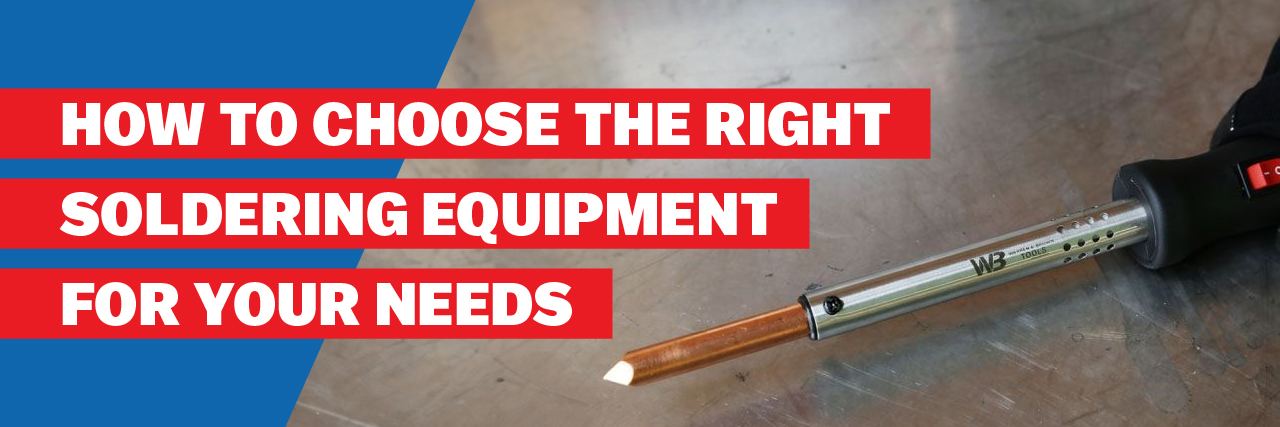Soldering vs. Welding: Exploring the Differences
News, Product Reviews - August 21, 2023

Soldering vs. Welding: Exploring the Differences
When it comes to joining metals, two prominent techniques stand out: soldering and welding. Both processes play vital roles in various industries, ranging from electronics to construction. However, they serve different purposes and exhibit distinct characteristics that cater to specific applications. In this article, we'll delve into the world of soldering and welding, examining their differences, applications, and advantages.
Soldering: Bonding with Precision
Soldering is a widely used technique for joining metals, especially in applications where precision and delicacy are crucial. It involves melting a filler metal—solder—between two or more workpieces to form a strong and reliable bond. Unlike welding, soldering does not require melting the base metals; instead, it relies on the solder's lower melting point to create a connection.
Applications of Soldering:
- Electronics: Soldering is indispensable in the electronics industry, where it is used to create connections between components on circuit boards. The low heat involved prevents damage to sensitive components.
- Jewelry Making: Jewelers use soldering to assemble intricate pieces, ensuring the metals' integrity while maintaining fine details.
- Plumbing: Soldering is used to join pipes and fittings in plumbing systems, creating secure and leak-proof connections.
Advantages of Soldering:
- Precision: Soldering allows for intricate work, making it suitable for delicate materials and small components.
- Lower Heat: The lower heat involved reduces the risk of distortion and damage to the base metals.
- Accessibility: Soldering equipment is generally more affordable and accessible, making it a practical choice for various applications.
Welding: Fusing for Strength
Welding, on the other hand, involves melting the base metals to create a strong fusion between them. This process results in a permanent and robust connection, making it suitable for applications requiring exceptional strength and durability.
Applications of Welding:
- Construction: Welding is extensively used in the construction industry to join structural components like beams, columns, and bridges.
- Automotive: Vehicle manufacturing relies on welding to assemble frames, body panels, and other essential parts.
- Aerospace: The aerospace sector employs welding for critical components like aircraft frames and engine parts.
Advantages of Welding:
- Strength: Welded joints offer exceptional strength and durability, making them suitable for heavy-duty applications.
- Structural Integrity: Welding creates a seamless bond between metals, ensuring structural integrity and stability.
- Versatility: Welding can be used with a wide range of metals and alloys, making it adaptable to various industries.
Differences at a Glance
-
Heat and Melting: Soldering uses a lower heat to melt the filler metal, while welding melts the base metals themselves.
-
Strength: Welding results in stronger connections due to the direct fusion of metals, while soldering may have lower strength but is sufficient for less demanding applications.
-
Precision vs. Strength: Soldering prioritizes precision and delicacy, while welding emphasizes strength and durability.
-
Applications: Soldering finds its niche in electronics, jewelry, and plumbing, while welding dominates construction, automotive, and aerospace.
-
Heat Affected Zone: Welding introduces a larger heat-affected zone, potentially leading to distortion or changes in material properties. Soldering minimizes such effects due to lower heat.
In the realm of metal joining, both soldering and welding play essential roles, each catering to specific applications and needs. Soldering offers precision and finesse, making it invaluable in delicate industries like electronics and jewelry. Welding, on the other hand, focuses on creating robust and durable connections, making it indispensable in heavy-duty sectors like construction and automotive manufacturing. Understanding the differences between these techniques empowers professionals to choose the right method for their specific projects, ensuring optimal results and lasting connections.
